GPs' remuneration and incentives: Consequences for the gatekeeper role
Report
|Published
This report examines whether the current remuneration scheme of general practitioners (GPs) supports their gatekeeping role. Our analysis focuses on GPs' earnings from fees to shed light on the role of financial incentives in the existing remuneration system.
Summary
This report examines whether the current remuneration scheme of general practitioners (GPs) supports their gatekeeping role. Our analysis focuses on GPs' earnings from fees to shed light on the role of financial incentives in the existing remuneration system. Specifically, we have investigated the relationship between GPs’ earnings and their prescribing of antibiotics, addictive medications, as well as their referrals to MRI examinations, specialist health services, and sick leave certification.
There is considerable variation in self-employed GPs' earnings per hour during working hours. The main explanations for this variation are that doctors who earn the most have more and shorter consultations. Generally, there is a higher use of discretionary fees among the highest-earning self-employed GPs. Despite spending less time with each patient over the course of a year, they also charge more fees per patient. This includes fees one would expect to require a longer consultation duration, such as the fee for talk therapy and the fee for an extended consultation (time fee).
For self-employed GPs, we find a clear association between higher earnings and more frequent prescribing of antibiotics, addictive medications, sick leaves, as well as more frequent referrals to MRI examinations and contracted specialists. The exception is referrals to somatic and psychiatric hospitals, where we do not find similar associations. It appears that the incentives in the current remuneration system for self-employed GPs might contribute to weaker gatekeeping, moving in the opposite direction of public recommendations as well as the recommendations in the Medical Association's "Choose Wisely" campaign.
We have also compared salaried and self-employed GPs using the same outcome measures. Self-employed GPs prescribe more antibiotics, addictive medications, and sick leaves, and issue more referrals to MRI examinations than salaried doctors. Salaried doctors issue more referrals to public mental health services, while there is no difference in the rates of referrals to somatic hospitals or contracted specialists. These findings indicate that the financial incentives for self-employed GPs may contribute to weaker gatekeeping in several areas.
We have also reviewed another report from 2022, written by the Norwegian Directorate of Health in collaboration with Oslo Economics and the University of Oslo. The report addresses the costs of permanent employment (fixed salary) in the municipal health services, concluding that a transition from self-employment to permanent employment for all general practitioners (GPs) would cost between 2.3 and 8 billion NOK annually. Our assessment is that these calculations are based on incorrect assumptions that overestimate the costs. The report does not adequately account for the fact that salaried GPs to a greater extent are more involved in other medical work or that fees are used differently by salaried and self-employed doctors. Additionally, indirect costs have not been considered. By using the number of listed patients as a measure of a GP's capacity, rather than self-reported workload or fee utilization, we estimate a significantly lower full-time equivalent requirement and associated costs. Furthermore, if one accounts for the additional costs linked to more liberal gatekeeping among self-employed GPs compared to salaried ones, the conclusion could as likely be the opposite. Our findings indicated that it may, in fact, be more economically beneficial for society to have GPs on fixed salaries rather than self-employed.


